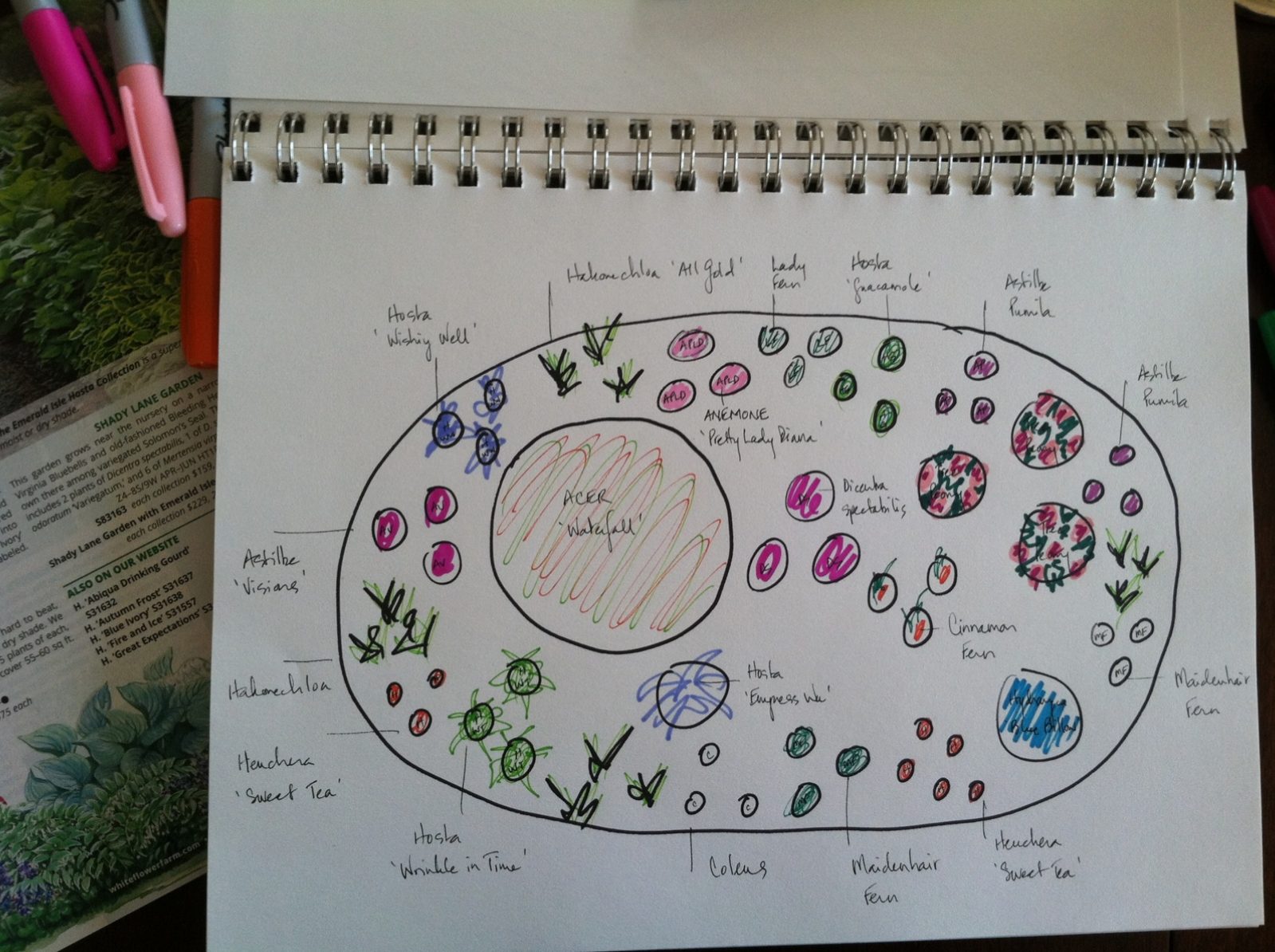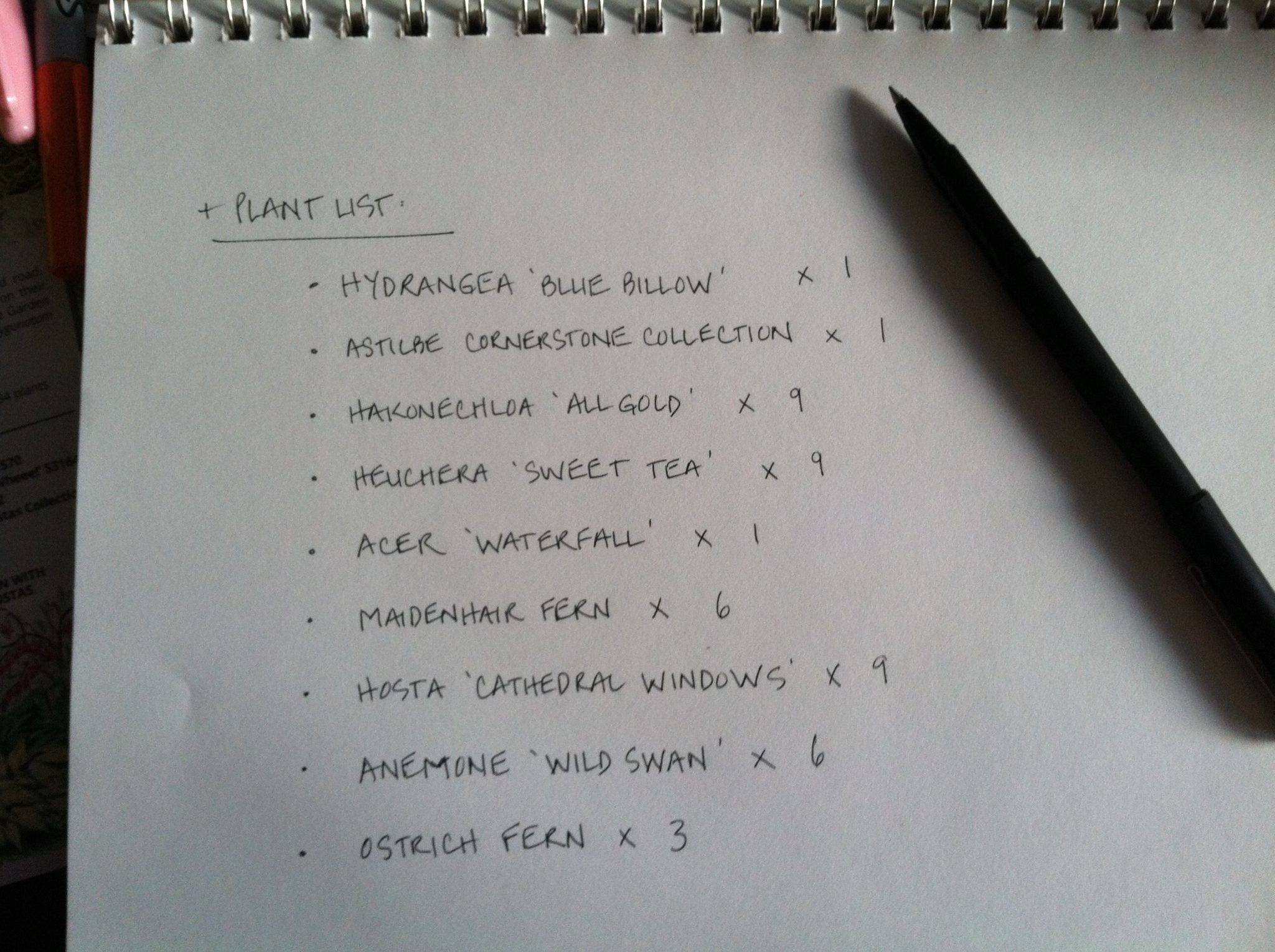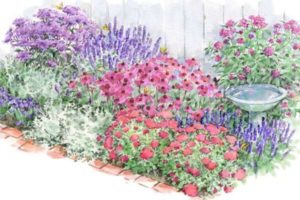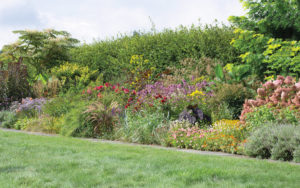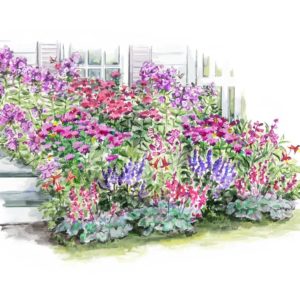With winter showing signs of an early withdrawl, some of us have been spending time sketching plans for gardens. Pen, paper and, if we’re feeling really fancy, colorful magic markers in hand, we play around with ideas for new borders or beds, and for redoing existing ones.
The first phase of this creative process always begins with what professional landscape designers call the “bubble diagram,” which is something many others might refer to as a “back-of-the-envelope” sketch. Bubble diagrams are loosely drawn schematics designed to define spaces within a landscape. No particular artistic skill or precise measuring is required, just the ability to draw circles on a page. For gardeners of any skill level, bubble diagrams are an extremely helpful way to visualize various features on a property – from specific areas or features in a yard (front lawn, back patio, wooded area, oak tree, swing set, raised bed, mailbox, etc.) to microclimates (dry shade under a Maple, boggy area, strip of lawn beside driveway that gets salt and sand on it every winter, etc.). The diagrams are a great place to play with ideas about how particular areas might best be utilized or planted.
As a general rule, the “bubbles” or hand-drawn circles are rendered in a variety of sizes and shapes to reflect the scale and form of what they represent.
Aside from defining general areas of a property, bubble diagrams can be helpful when creating planting schemes for particular beds and borders. The planning of any garden involves knowing what to put where, what grows in sun or shade, what likes well-drained soil and what will tolerate moisture, what blooms in spring and what in fall. While the growth habits and characteristics are available on plant tags and websites and in catalogs, trying to juggle these items while digging around in the garden with dirty hands and gloves can be tricky. (If you’re over a certain age, it can also be difficult to read the small type on plant tags, which means you’ll be juggling reading glasses, too.) A bubble diagram obviates the need for all of this by consolidating the information you need and putting it into a simple, easy-to-scan schematic. Where to put the Agastache ‘Blue Fortune’ or the Alchemilla mollis? You sorted those questions out when you sat with your feet up beside the fire, and you incorporated the information into your drawing.
Once spring comes, and you’re outdoors digging in the dirt, you need only glance at your bubble diagram to know that Dahlia ‘Bishop of Landaff’ is the one with dark foliage that’s shorter in stature than the towering Dahlia ‘Show ‘n’ Tell’; Hosta ‘Aphrodite’ is the fragrant variety you want to plant alongside the porch (the better to enjoy its sweet perfume), and Buddleia ‘Miss Molly’ is the butterfly bush you chose for the middle of the sunny border.
There are other benefits to creating bubble diagrams. As a simple exercise, drawing them loosens the hand and opens the mind. Because these sketches are rendered without much fuss or detail, and because they take very little time, they are easily redrawn, crossed out, discarded or redone. There’s no penalty for making planting “errors” unless you count the bits of crumpled paper you occasionally add to the fire. The imagination is free to take chances and try things that can require quite a bit more effort when you’re outdoors. Bold experiments can be assayed, and the remarkable thing is, some of your craziest ideas might eventually become a reality or part of the reality of your garden.
So spend a bit of time over the next few weeks letting the ideas bubble over onto paper. Even the smallest gardens benefit from the process. Bubble diagrams are an excellent way to organize your thinking, refine plant lists, and consolidate information about what you’ll be planting where. Creating them is a dreamy and productive way to pass the time while waiting patiently for the gardening season to begin.



